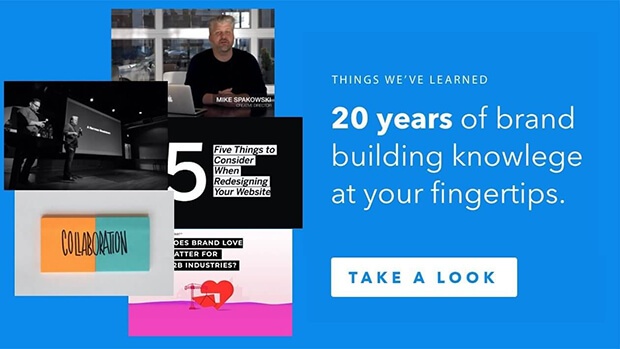Websites Are Back — How to Make Yours Work for You
“Listen, our website will never sell anything.”
I tend to write about topics that I hear repeatedly from clients and prospects, and this one got me thinking this morning.
“This isn’t like Amazon, where you can buy what we do on a website. Our sales team does the selling.”
In a lot of new business meetings I’ve been in, there is a really strong belief that a website doesn’t really play a role in a company’s actual sales process. That websites are just there for credibility and to look nice.
Of course, this is typically in B2B industries, and this belief is usually held by someone on the sales team.
They’re not wrong. Not entirely.
But I sometimes wonder if they’ve ever had a great experience on a B2B website that’s beyond the expected “Home. About. Services. Contact.” pages.
A great website experience puts your prospect first, is built around helping them overcome their challenges, and the beautiful new world that will open up when they choose to do business with your company.
The typical company information is, of course, still there — but it takes a back seat to the customer.
You’ve probably experienced this with a lot more B2C brands, but when you B2B brands adopt the same approach, your website now becomes part of the sales process — making it easier for marketing teams to generate leads, and for the sales team to close.
The problem: only doing what’s been done before.
I think the reason some people don’t consider a website as a real part of the customer experience is that the typical, boring pattern of “Home. About. Services. Contact.” is such an established design pattern, and so engrained in people’s mind, that it’s hard to imagine past that.
An easy way to frame new thinking around designing your website is to think of the typical intro conversations with new prospects. What do they ask? What is their goal? What do you say to move them closer to the sale? How do you respond?
It’s different thinking, but planning your website around your customers’ questions can make it a magnet for new business.
A good hack is to use tools like Google Search Console to see what people are searching for to arrive at your website. I bet most searches are usually questions. You can use those questions in the search data to build out sections and content that matter most to your audience.
If you’re going to invest in a new website, don’t settle for just making it a sales brochure. Use the opportunity to generate leads and close more deals.
Covid-19 makes websites important again.
I’m so tired of talking about Covid and the uncertainty it’s causing in the business world that I debated even including this last part, but I think it’s important.
For a while, pre-2020, I was starting to think that the importance of a website for businesses was fading, and that brands can live strongly across social media channels.
After all, the average American spends a little over 2 hours a day on social media. The average time spent on a website is 45 seconds.
To me, social media has become the place to see actual updates and personality from a business, and not just their brochure website. So maybe websites were becoming a little less important — still necessary, but you could get away with not having a great one.
We’ll see, but I think I was wrong about that. Now, thanks to Covid, the focus has really shifted back to the website.
Business websites have more lifting to do than ever, making up for fewer office tours, fewer in-person meetings, fewer sales lunches, and almost no trade shows.
Those things are all where a prospect gets to interact with the business’ culture and see its personality. Those are the pieces that are in place to interact and delight customers.
And by reframing how you think about it — by thinking beyond “Home. About. Services. Contact.” — your website can do the same.



